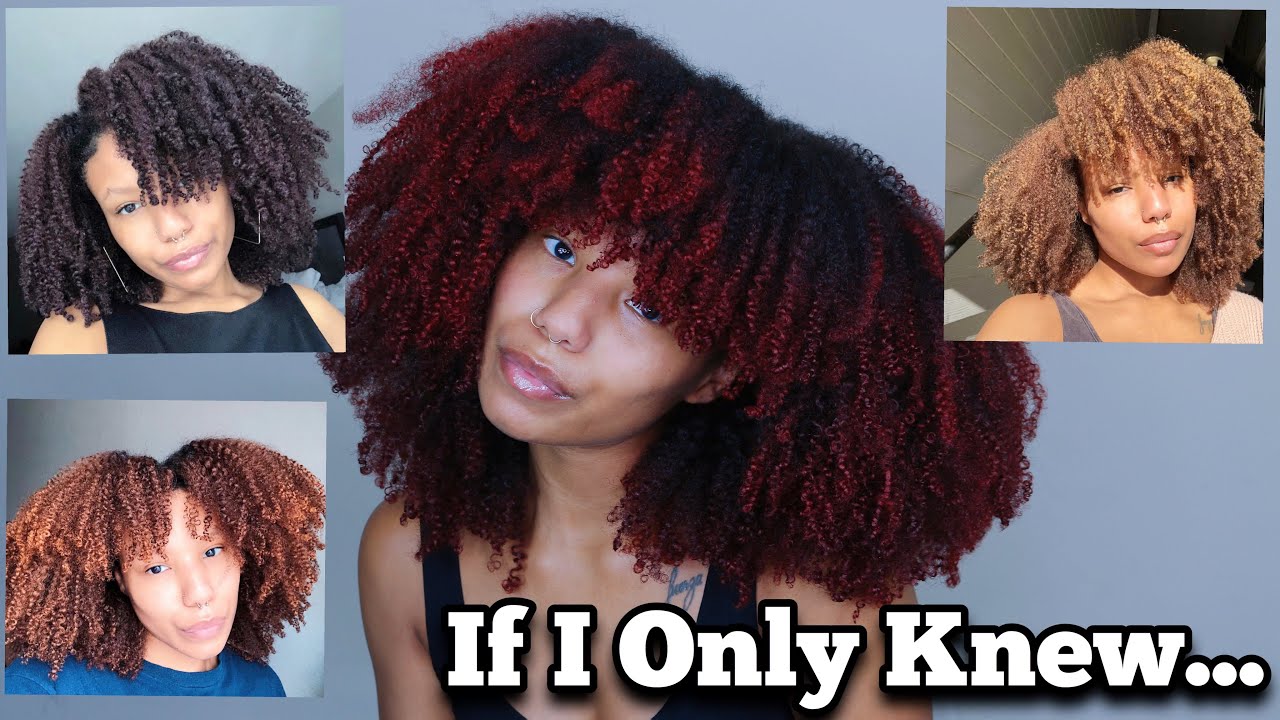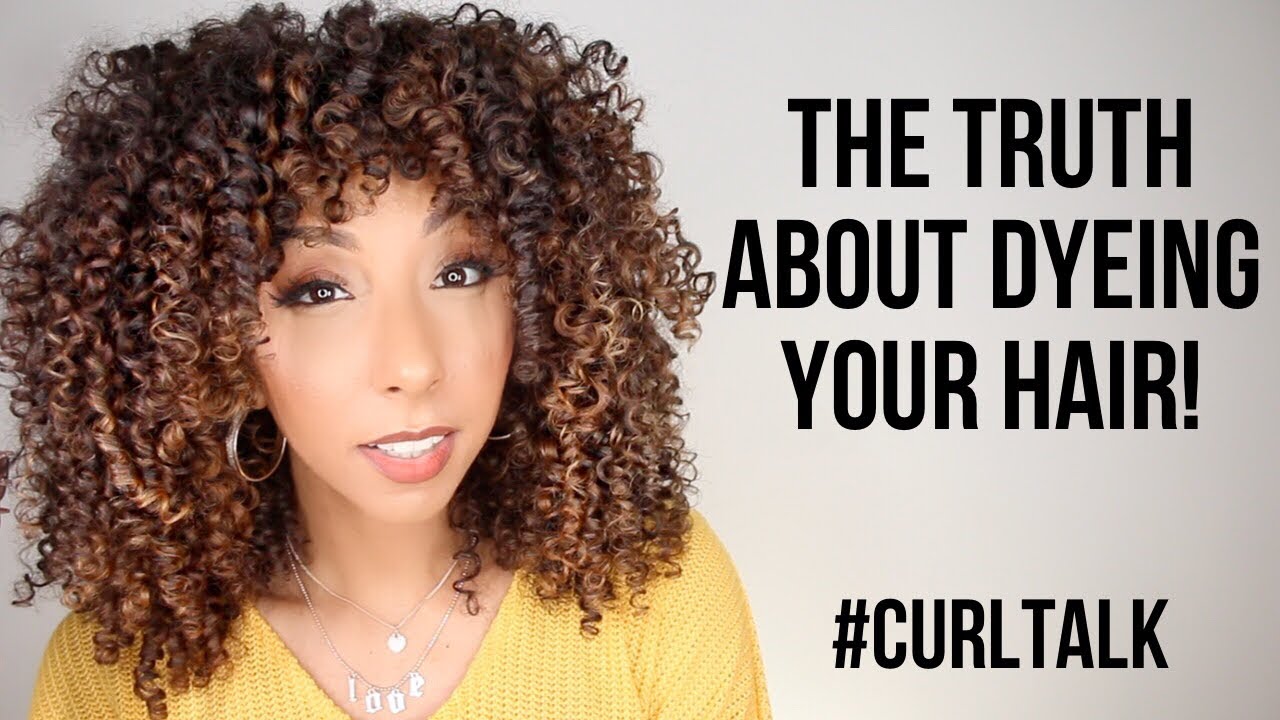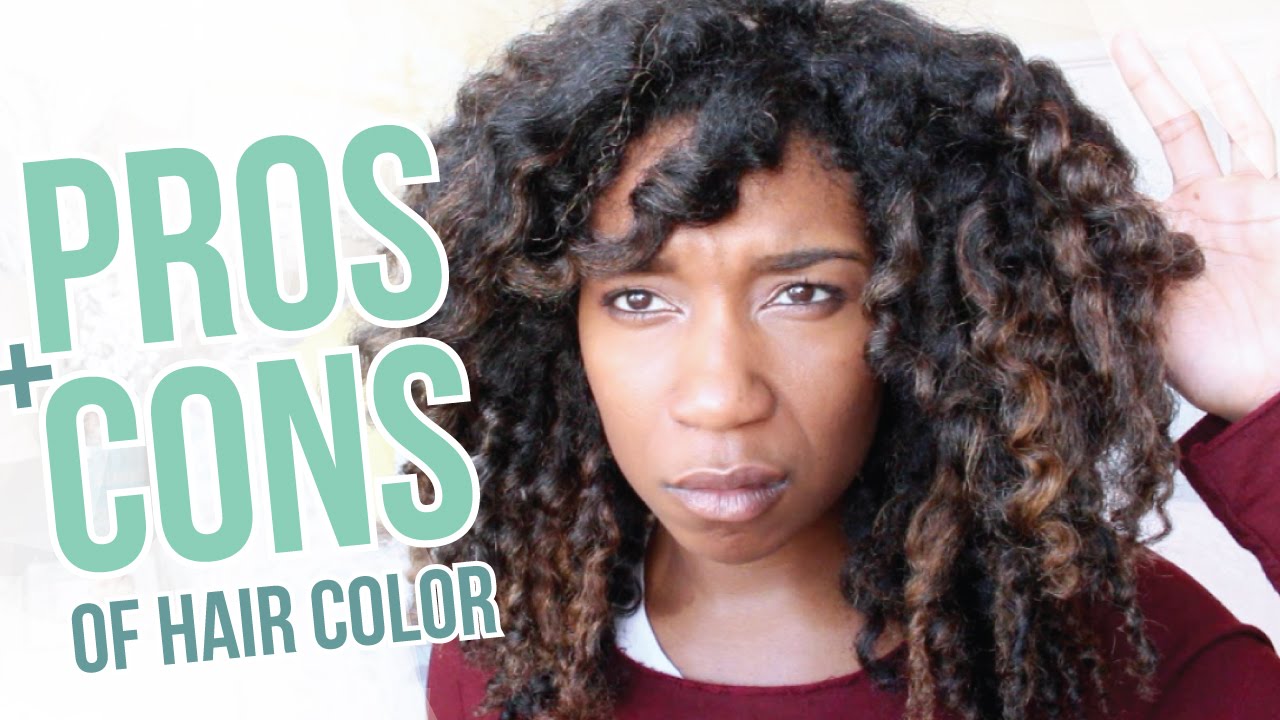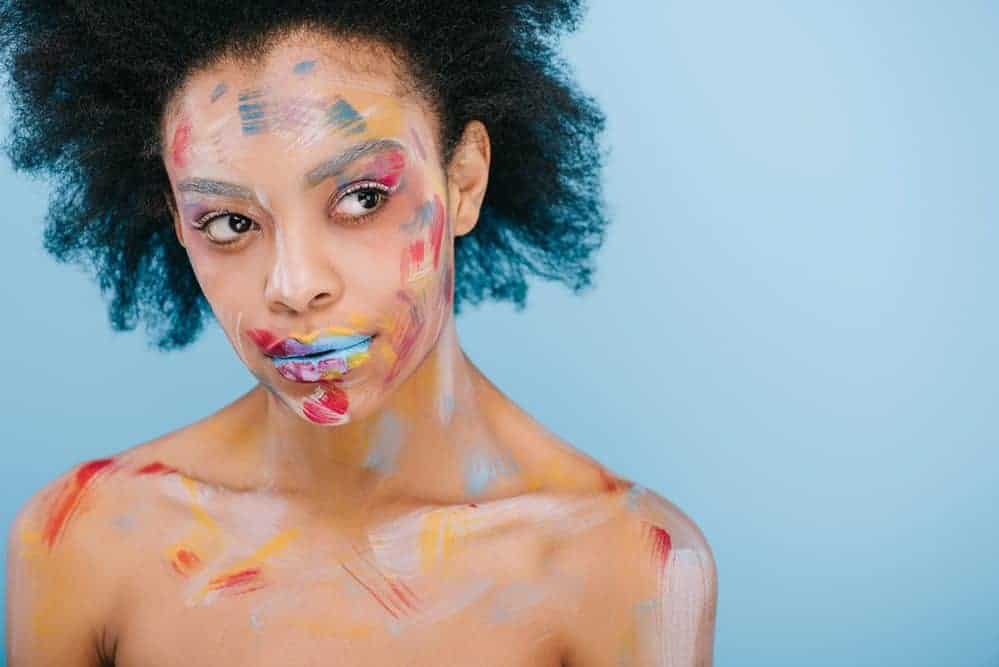
If your hair has been color-treated, it has much less strength compared to hair that hasn’t been color-treated (i.e., non-colored-treated hair).
This is especially true if your hair has been processed twice. For example, if your hair has been relaxed and colored, it has been processed twice, potentially leading to significant hair damage.
It's important to understand that the feel and texture of your hair will be altered after any chemical processing, as hair will have a coarser texture and feel thicker and drier.
The change in texture and feel is due to the damage that was done to the cuticle and inner layers within the hair shaft.
If you regularly use permanent hair color on your hair, you will notice that your hair will not feel the same way it did prior to the coloring process. This is due to the loss of protein and the depletion of moisture (i.e., leading to dry hair).
Using permanent hair coloring techniques damages the hair's natural keratin protein structure, increasing the hair's porosity, which in turn makes the hair strands more susceptible to further damage.
The damage reduces the hair's ability to maintain moisture, often resulting in significant dryness.
However, working towards repairing the damage (or preventing as much of the damage as possible) can not only help you retain the hair color for a longer period but can also help your hair retain its moisture.
This article will discuss protective measures to take before coloring your hair and a color-safe hair regimen leading to a vibrant, healthy appearance.
Table of Contents
- 1 Tips Before Coloring Your Hair
- 2 Hair Care Routine (Regimen) for Color-Treated Hair
- 3 Sample Color Treated Hair Regimen
- 4 Keep Your Hair Color from Fading (Quickly)
- 4.1 If You’re Using Heat While Coloring Your Hair, Follow These Hair Care Tips
- 4.2 Water Can Cause Multiple Problems with Freshly Colored Hair
- 4.3 What Are the Best Hair Color Products?
- 4.4 What Are the Steps to Coloring Hair?
- 4.5 How Long Should You Leave Hair Dye in Before Rinse?
- 4.6 Do You Dye Hair Wet or Dry?
- 4.7 Can Hair Coloring Cause Hair Loss?
Tips Before Coloring Your Hair
This video by Jaelen Mitchell, also known as Natural Reign on YouTube, provides the following helpful tips:
- Everyone's hair is different, so consider factors like density, porosity, and thickness before using a hair dye on your natural curls.
- Start with healthy hair to maintain healthy hair after the dyeing process. Using hair color can be very damaging; if your hair isn't healthy, don't utilize hair color.
- Understand your hair's porosity (high, medium, or low) and how porosity can impact the hair dyeing process. We provide more details about hair care routines focused on hair porosity issues later in the article.
- Use semi-permanent dye to maintain color without causing as much damage, especially if your hair has been dyed already. In other words, avoid using permanent hair color when possible.
- All hair colors are not created equal; if you have dark hair, lighter colors will generally be more damaging than darker colors. There are numerous hair color ideas to consider, and staying close to your natural hair color would be recommended. If your hair is dark (e.g., brown hair) and you want to go light (e.g., blonde hair), do it over time to minimize hair damage.
- Maintenance matters: Deep condition your hair, use protein treatments, and keep your hair moisturized. Later in the article, we provide a sample hair care regimen for ladies that commonly use hair color.
- Avoid doing multiple damaging activities to your hair, like dyeing and frequent heat-styling. These damaging activities will lead to significant issues like hair breakage and shedding.
Keep reading for more detail about these tips and other important considerations.
When Can I Color My Hair After a Perm or Chemical Relaxer?
First, make sure that you are relaxing your hair and then coloring your hair, not vice versa. We recommend waiting a minimum of two weeks after a chemical relaxer to color your hair.
In our experience, if you don’t wait two weeks and color your hair more quickly, damage to your hair will occur, and it may not be repairable. In the past, we’ve seen women suffer from significant hair breakage.
There is logic behind our recommendations. For example, chemical relaxers are much harsher on the hair than hair coloring treatments, so the preferred approach is to relax your hair when your hair is in its strongest state.
You can subsequently use mild protein treatments and deep conditioning treatments to rebuild over a two-week period prior to coloring your hair.
We don’t recommend that ladies use chemical relaxers, although if you decide to make that decision, we always recommend that you apply either hair grease (e.g., Vaseline) or your favorite hair oil to protect your older, previously relaxed hair (somewhat) from the harsh chemicals when you're receiving a touch-up relaxer.
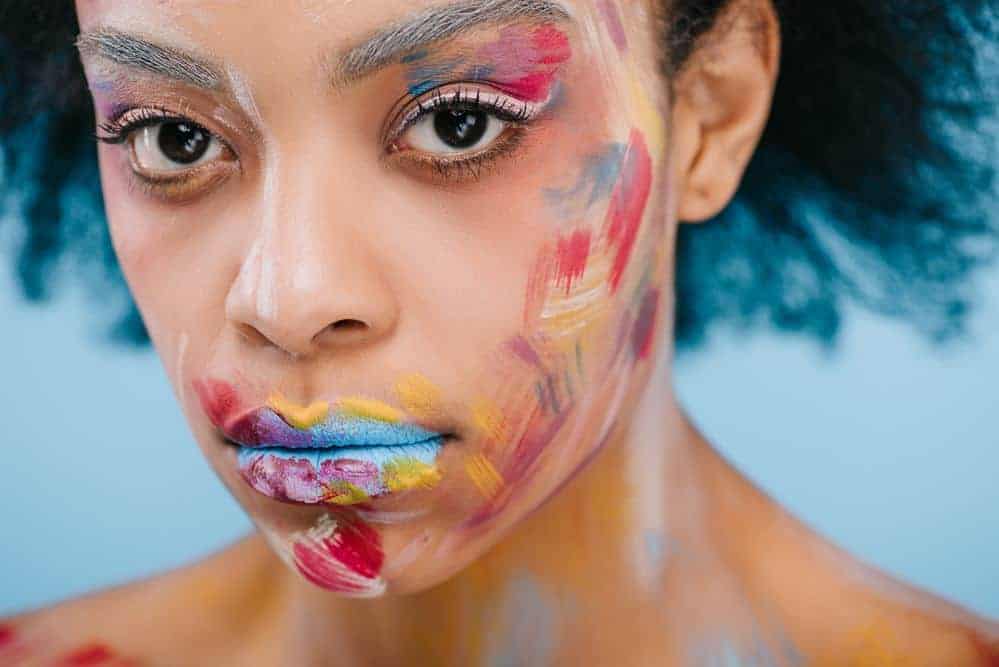
Can I Dye My Hair If It's Breaking? Can My Hair Handle the Damage Associated with Coloring?
We don’t recommend coloring your hair if it’s breaking heavily, although it’s ultimately your choice. Before you color your hair, there are some things you should consider.
Make sure that your hair is strong enough to handle a chemical process.
If you’re experiencing significant breakage or shedding, your hair is weakened or damaged, and if you decide to color your hair, the results may be poor. Actually, you’re likely to make the condition of your hair even worse.
Are There Steps I Should Take Before Coloring My Hair?
Roughly one week prior to coloring your hair, we recommend using a chelating shampoo to clean away any mineral deposits or product build-up from the hair shaft. We like the Joico brand products as pre-hair coloring shampoos.
We also recommend deep conditioning your hair with a moisture-heavy, protein mix. This process will mitigate damage from hair coloring treatment, and the gentle protein will help the hair color stick more easily.
How Drastic Will Your Hair Color Change Be?
If you are only going a bit darker or attempting to enhance your current natural color, you may opt for a color rinse or deposit-only color (e.g., temporary hair color).
These methods do not cause as much damage to the hair and can actually help (temporarily) fix some porosity issues. These methods stick to the outermost layer of the hair and will fill in cracks or fractures within the hair cuticle.
However, if you are going for a more drastic hair color change, such as more than a couple of shades lighter or darker, you can still use a color rinse a couple of weeks after coloring to aid in damage repair and to extend the life of your new color.
With these tips in mind, good luck with the DIY hair coloring process. Remember to seek out a professional hairstylist if your hair coloring goes wrong while attempting to do it yourself.
Note: Going from dark hair (e.g., black or medium brown hair) to much lighter hair can be very damaging to your natural hair strands. We recommend choosing hair colors that are close to your natural hair color if you're not going to a beauty salon. For example, if you're a complete beginner, you might consider starting with a semi-permanent hair color that only makes subtle changes to your natural hair color.
Hair Color Ideas: If you're new to dyeing your hair and looking for the best hair color ideas, consider your skin tone and natural hair color. This will help you determine which shades complement your facial features and look the most natural.
You can also take inspiration from celebrity hair colors or popular hair color trends. I like to use YouTube, Pinterest, and Instagram for hair color ideas. You'll want to consider factors such as the level of maintenance required (subtle highlights vs. dyeing gray hair) and if the color will suit your lifestyle.
Before making any drastic changes, we recommend meeting with a professional colorist (or stylist) who can guide you through the process, design a hair color maintenance regimen specific to your needs, and help you achieve the best results.
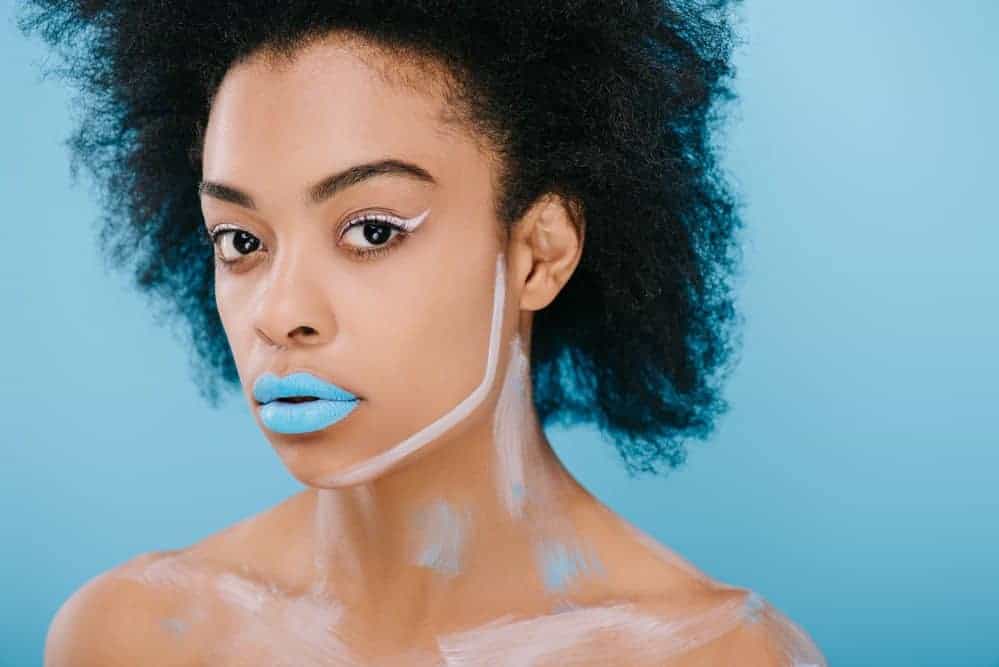
Hair Care Routine (Regimen) for Color-Treated Hair
Textured hair types already need more moisture compared to other types of hair, but coloring textured hair amplifies the need for a regular moisturizing routine.
Protein should also be incorporated into your moisturizing routine to aid in repairing your hair's strength post-coloring.
This section will focus on a color-safe hair care regimen, including implementing the appropriate amounts of moisture and protein.
Again, it must not be discounted, you should not color hair that has been severely damaged because your hair color won’t last as long, and you will not receive the results that you’re expecting. In most cases, your hair will end up with even more damage.
Shampooing Colored Hair
To maintain your newly deposited hair color for a longer period of time and keep its vibrancy, it’s important that you don’t take very hot showers. Warm to lukewarm showers are recommended for color-treated hair.
Hot water has a drying effect on your hair, regardless of whether your hair has been color-treated or not. This “drying effect” will also cause the superficial hair color to fade. When washing your hair with hot water, you also run the risk of stripping the sebum from your scalp.
Ensure that you’re not shampooing your hair with hard water, and stay away from pools, lakes, beaches, and oceans that might contain saltwater or chlorinated water.
When choosing a post-color shampoo, choose one that won’t strip your hair of its natural oils because it will also strip the color from your hair.
You will want to choose shampoos specifically formulated for colored hair, as they are more acidic and will help alleviate the coarseness that you feel in your hair post-coloring.
Learn more about acidic shampoos by reading our guide on utilizing pH-balanced shampoos and conditioners. However, if the shampoo that you regularly use is a gentle, sulfate-free product, you can continue using it.
For the first couple weeks post-coloring, minimize shampooing your hair.
We recommend shampooing as little as possible following hair color treatment, as the goal is to keep the cuticle scales protected and smooth. Harsh shampoos can cause cuticle damage, leading to breakage over the course of time.
Conditioning Color Treated Hair
The first two weeks following a hair coloring session are essential to prevent further damage to your hair. So, in addition to the other things that we’ve mentioned, avoid any heat styling. This includes hair steamers, hood hair dryers, and flat irons.
Every time you shampoo your hair, follow up with a 20-30 minute deep conditioning treatment with either a protein-based conditioner or a moisture-based conditioner. If you need product recommendations, we recommend reading the ultimate guide to finding the best natural hair products for your regimen.
Typically adding heat to your deep conditioning session enhances the results, but adding heat to freshly colored hair will deteriorate the hair color.
The Truth About Coloring Your Curls With Hair Dyes
Sample Color Treated Hair Regimen
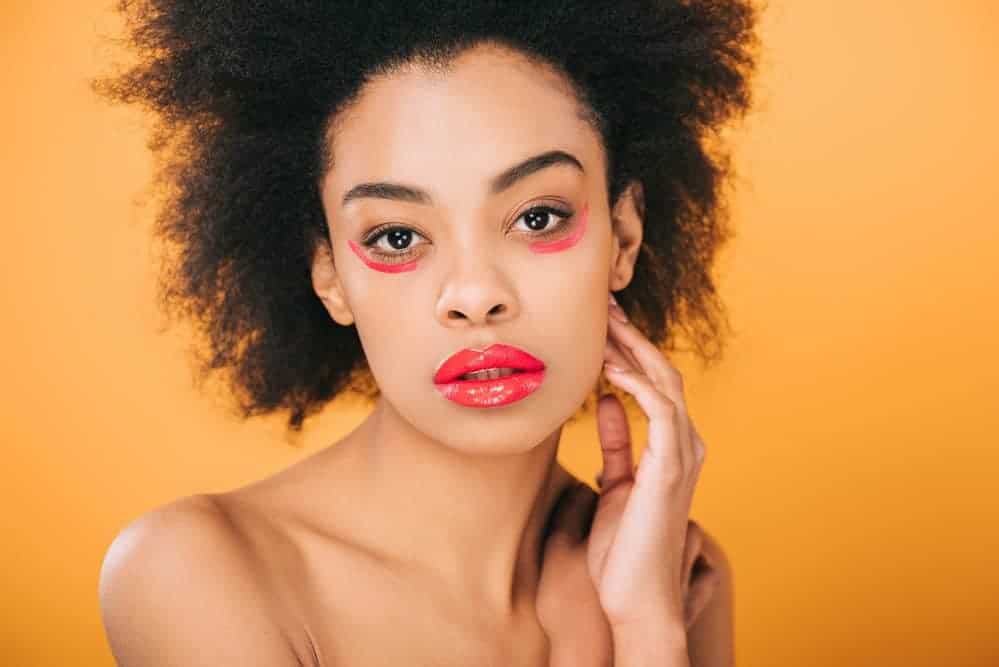
As mentioned earlier in this article, you should incorporate regular deep conditioning sessions for the first few weeks after coloring your hair, but you should also alternate between moisture-based conditioners and protein-based conditioners to help with increased porosity.
Further, we recommend investing in a daily water-based moisturizer, which you can seal-in with oil.
Color Treated Hair Products: Step-by-Step Hair Care Regimen
Products that should be included in your regimen:
- Chelating Shampoo (should be used prior to coloring your hair, and if you have hard water or enjoy swimming)
- Moisturizing Shampoo (formulated for color-treated hair)
- Protein Reconstructor Conditioner
- Water-based Protein Conditioner
- Water-based Moisturizing Conditioner
- Oil (use your favorite hair oil)
Week 1: Deep condition your hair with a moisture-based conditioner without using heat. You can add a small, nickel-sized amount of protein-reconstructing conditioner to your moisture-based conditioner if your hair is feeling too spongy.
Week 2: Deep condition your hair with a protein-based conditioner. Once again, you should not use heat during this deep conditioning treatment. Shortly afterward, follow up with a brief moisture-based conditioning treatment for no more than 10-15 minutes.
Week 3 and beyond: Listen to your hair. By this, we simply mean it’s time to tailor your hair care regimen to your hair’s specific needs. As a guide, we often recommend alternating between moisture-based treatments and protein-based treatments to ensure that your hair is getting a good balance. However, the reality is that your hair might need more of one or the other depending on a number of factors, so personalize this plan to meet your individual needs.
Product or Brand Recommendations: We're fans of the Wella hair care line and have written extensive reviews on several different Wella hair dyes and toners. However, these techniques are universal and can be used with any hair dye brand: Wella, Madison Reed, Manic Panic, Schwarzkopf, and many more.
Pros and Cons of Hair Color: Should You Use Hair Dye?
Keep Your Hair Color from Fading (Quickly)
Over time your hair coloring will undoubtedly fade; however, there are some things that you can do to keep your hair color from fading quickly.
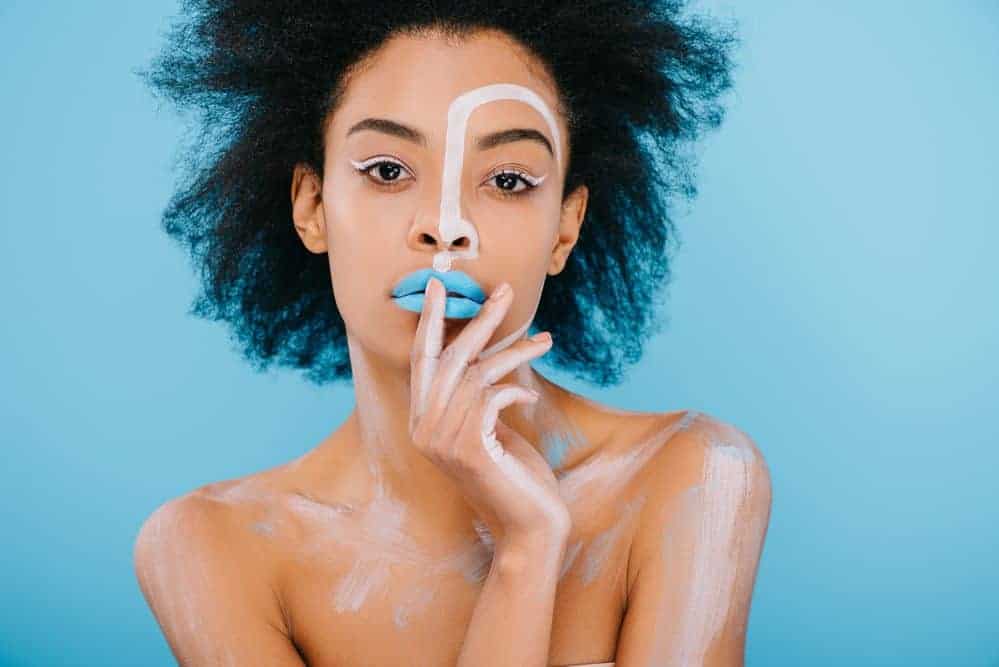
If You’re Using Heat While Coloring Your Hair, Follow These Hair Care Tips
Some coloring processes require heat; if this is true for your coloring process, then you should allow your hair to cool down before rinsing out the hair dye.
If you rinse your hair while it's still hot, you’re likely to send your hair color down the drain. This is especially true with deposit-only colors and temporary color rinses, so take the extra time to allow your hair to cool down after using heat.
Water Can Cause Multiple Problems with Freshly Colored Hair
The problems can be broken down into three basic categories: (1) frequency of water usage, (2) type of water used, and (3) water temperature.
The Frequency of Water Usage
Anyone who has colored their hair knows that your hair color will fade a little each time you wash your hair. This is true for all types of hair coloring processes, including temporary, permanent, and semi-permanent hair dyes.
Each wash will strip a little bit of color from your hair, with the temporary coloring processes lasting for much less time. To ensure that your hair color lasts longer, do not use any water on your hair for at least one day following the initial color application.
When creating your color-safe regimen, we recommend that you only wash your hair once per week, although a 4-7 day window might be preferred for some women.
This will protect your hair color and reduce stress on the cuticle, mitigating hair damage. Continue to use a balance of protein and moisture-based deep conditioning treatments following your wash routine.
The Type of Water Used
As mentioned earlier, hard water and chlorinated water from pools are detrimental to color-treated hair. We recommend that you invest in a water filter for your shower to purify the water used on your hair.
Swimmers should saturate their hair in fresh water before jumping into the pool, as this will help reduce the amount of chlorinated water that your hair absorbs. From a product standpoint, we recommend that swimmers and those with hard water use a chelating shampoo for regular hair color maintenance.
Water Temperature
As mentioned previously, hot water will fade more of your hair color compared to cooler water, and hot water makes the hair dry out. Try to use lukewarm to cool water as often as you can.
What Products to Use
Make sure your hair products are designated for colored-treated hair, as some strong shampoos can fade your hair coloring more quickly.
Some products that are geared towards colored hair will include small amounts of hair coloring or color enhancers that help your hair color remain vibrant longer.
In addition to using color-safe shampoos and conditioners, consider implementing products into your routine that contain sunscreen and hair oil. The goal is to protect your hair and skin.
Make sure you use a moisturizer that has protein! Continuously conditioning helps maintain your hair color longer.
Products that contain alcohol, such as certain hair sprays, mousses, spritzes, and gels, can fade your hair color.
Related Questions
- What’s the Difference Between 1B and 2 Hair Color?
- Can Coconut Oil Remove Hair Color?
- Will L’Oréal Hicolor Damage My Hair?
- Can You Dye Black Hair Without Bleaching?
- Does Hair Dye Kill Lice and Their Eggs?
- Can You Dye Wet Hair?
What Are the Best Hair Color Products?
The best hair color products are often professional-grade colors that are only available to licensed cosmetologists. However, there are some decent alternatives that are available for at-home use. Some popular brands of at-home hair colors include Wella, L'Oreal Paris, Garnier, and Clairol. To ensure the best results, read reviews and consult with a hairstylist before selecting a hair color product.
What Are the Steps to Coloring Hair?
The basic steps to coloring hair are preparing the hair, mixing and applying the hair dye, processing the color, rinsing your hair, and conditioning the hair. Follow the instructions on the hair dye's packaging carefully. Before coloring, protect your skin and clothing. Apply the dye to your hair in sections, starting at the roots and working your way down to the ends.
How Long Should You Leave Hair Dye in Before Rinse?
The amount of time you should leave hair dye in before rinsing depends on your specific product and your desired result. Most hair dye products recommend leaving the color on for 20-45 minutes, depending on the strength of the developer and the color you're trying to achieve. Follow the instructions carefully to avoid damaging your hair and scalp.
Do You Dye Hair Wet or Dry?
Some hair dyes are meant to be applied to wet hair, while others are designed for dry hair. Read the instructions carefully and follow them to achieve the best results. In general, if you're using a semi-permanent or demi-permanent hair color, it's best to apply it to damp hair, while permanent hair dyes are typically applied to dry hair.
Can Hair Coloring Cause Hair Loss?
Hair coloring can cause hair loss, particularly if you're using a hair dye with harsh chemicals or if you're allergic to the ingredients. Choose a gentle hair dye product and perform a patch test before applying the color to your entire head. Seek medical attention if you notice excessive hair loss or scalp irritation after coloring your hair.
Some Final Tips, Thoughts, and Considerations
Whether you're opting for a subtle hair color change or a more drastic hairstyle transformation, taking the necessary precautions before and after the coloring process is crucial.
I want to reemphasize the importance of considering your hair's strength, waiting an appropriate time after a perm or chemical relaxer, and using recommended products and techniques to maintain your new hair color.
With various hair color ideas, including ombre and root touch-ups, this guide offers valuable advice on using permanent hair color and semi-permanent and temporary hair dyes.
By following these steps and tailoring your hair care regimen to your specific needs, you can ensure a stunning and long-lasting result for your hair coloring endeavors.
Avoid blow drying and heat styling as much as possible, as these techniques can also cause your hair color to fade and deplete the moisture in your hair. Further, using too much heat can severely damage already weakened hair.
Don’t go outside when your hair is damp, as excessive exposure to the sun can increase the fading of your hair color. As mentioned previously, take the recommended precautions if you’re a swimmer and consider UV protection.
Finally, incorporating clear color rinses into your hair care routine would benefit your hair, as it would provide shine and aid in prolonging the duration of your color.
They’re easy to do as well! As a matter of fact, anyone can utilize a clear color rinse, even if their hair has not been colored!


